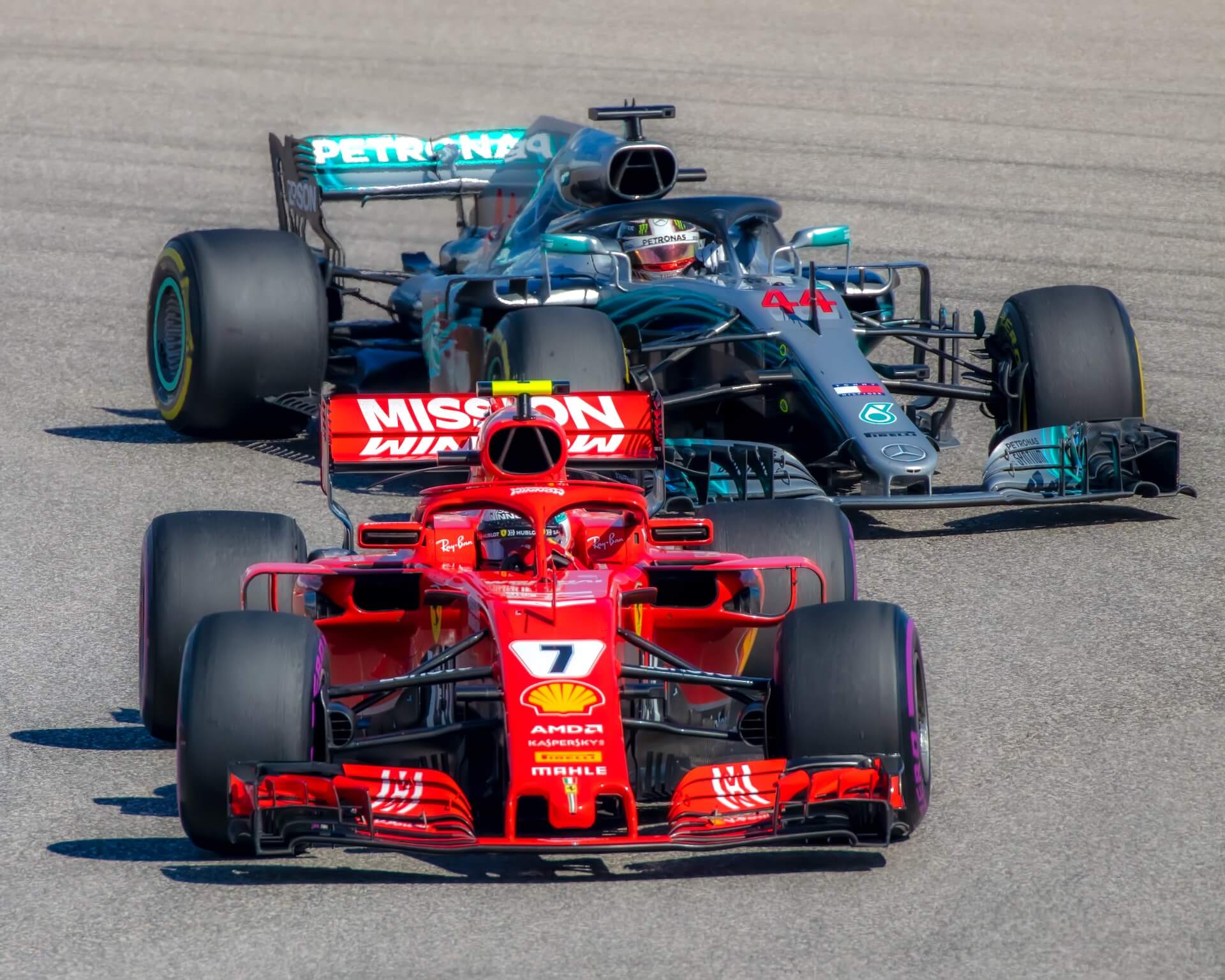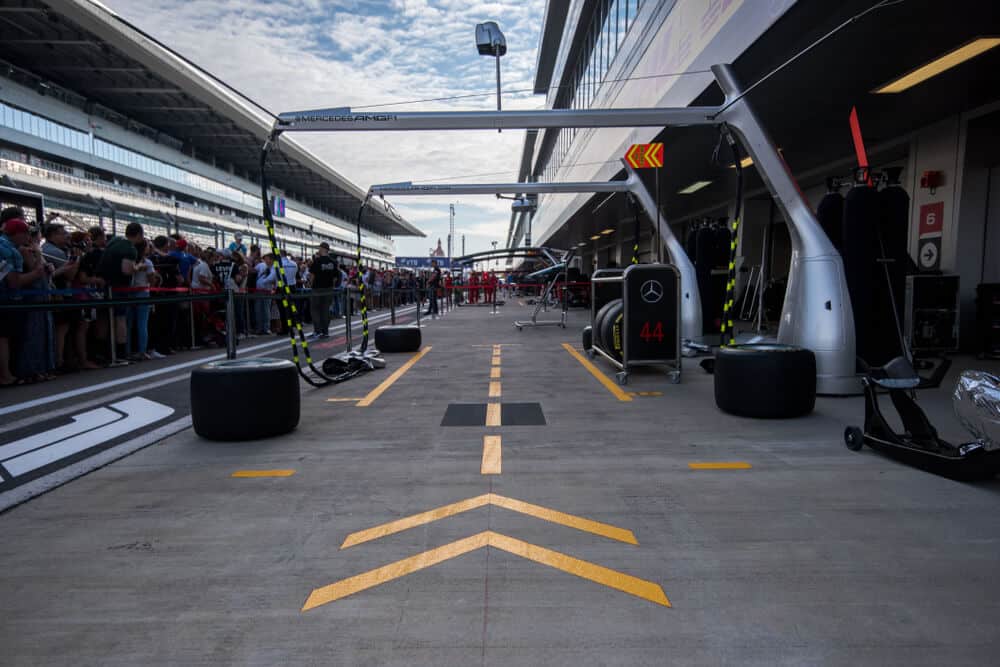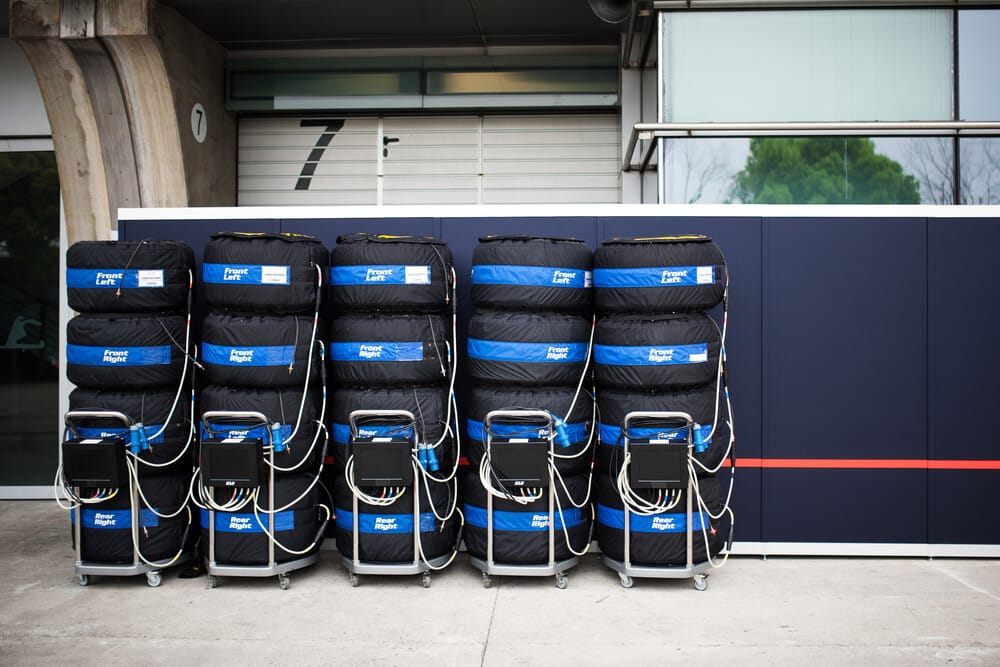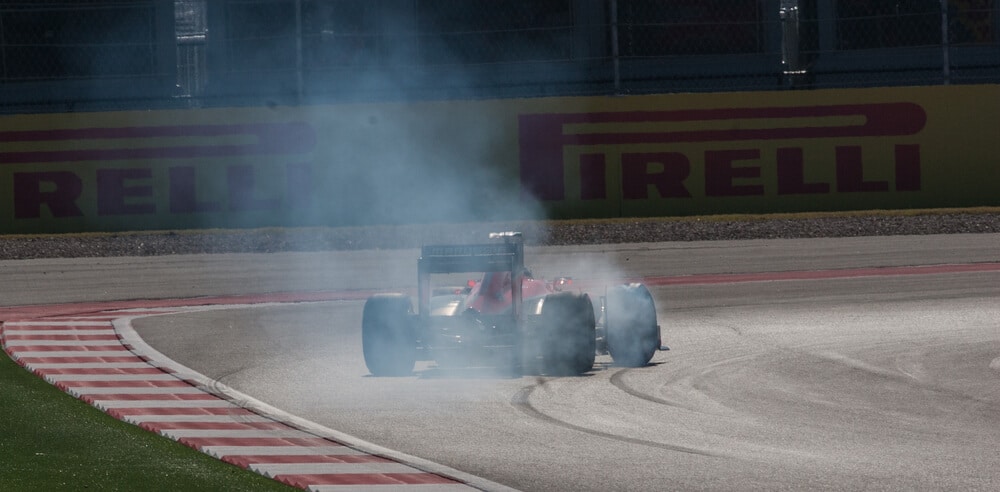It’s incredible the effects air could have on motorsports. Through years of research and practice, engineers and drivers have found ways of using air as an aid in racing. One such use is the slipstream effect. Commentators often use the term throughout the game, and most of the time, beginners aren’t aware of the meaning and the use behind this term.
What does it mean?
How does it help the drivers?
Let’s jump right into this article to know more about slipstream.
Table of Contents
Watch this video to understand why slipstream is good but dirty air bad.
What is slipstream in F1?
Slipstream is the name given to the reduced drag effect that an F1 car experiences when it is behind another car in the race. This reduced effect helps the vehicle to attain more speed and overtake the car in front of it.
Key takeaways
- Slipstream is the name given to the reduction of the drag that a Formula One car experiences when it is towing in close proximity to another car.
- Slipstream helps the car to achieve much greater speeds without actually having to do much work itself. It also helps to save fuel consumed by the car.
- Slipstream is one of the examples of how dirty air can also be of some benefit to Formula One cars during their races.
- Dirty air is the turbulent, chaotic air that does not allow much downforce to be generated.
- Oversteering is the name given to the phenomenon when the car loses its grip on its rear end, which allows it to make extremely powerful slides.
- Understeering is when the car has more grip towards the rear end of the tires, which makes it more stable and predictable, especially when taking corners.
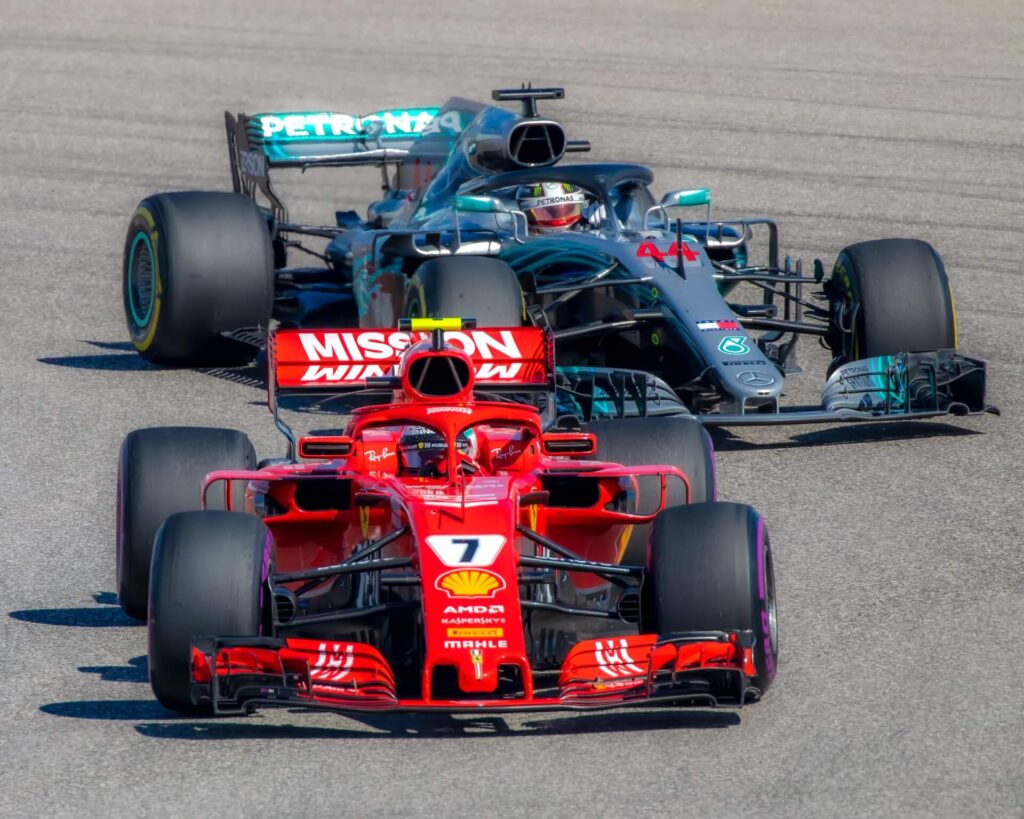
How is a slipstream created?
Formula One cars are specially designed to reduce the drag effect and help them attain more speed during the race. However, sometimes, these designs turn out to be quite advantageous for the other cars taking part in that game. One such advantage that a car behind the leading gets is the slipstream effect.
The slipstream effect is the reduced drag effect that a car experiences whenever it is driving behind in close proximity to a leading car. The slipstream effect is created when the leading car drives through the air, creating a hole in the air. This is made possible by the F1 car’s designs and aerodynamic parts, such as the rear wing.
The hole created is kind of like a vacuum for the car behind the leading car. That space has dispersed air particles which creates a reduced drag effect on the car. It is mostly like the leading car kind of drags you through the track.
This reduced drag effect helps the car to increase its acceleration as they don’t have the air drag hindering its speed. This can be most commonly seen in Formula One races when a car directly behind a leading car suddenly increases its speed and overtakes the car in front of it.
Clean vs. Dirty air
Formula One cars are designed and constantly updated to reduce the effects of dirty air and increase their performance with the help of clean air. Many people might face a little difficulty in understanding these two kinds of air in F1 and the differences between them. Discussed below is what clean air and dirty air mean in F1 and what significance does it hold.
Dirty Air
When a car drives through the air, it disrupts the air’s flow. The clean air is used to generate downforce on the car, and the turbulent air that is left is thrown toward the rear end of the car. This dirty air is less dense, and its particles are far more chaotic than clean air. Hence, the car at the back, which is getting this air, can’t generate much downforce. In addition, the engine of the car causes hot air from its surroundings to mix with dirty air, making it even dirtier.
The reason behind the incredible speeds of the Formula One cars is the downforce that they generate during racing. This downforce helps the cars to take corners at extremely high speeds. Downforce is generated using clean air, and dirty air disrupts the creation of downforce. This means that the driver has to try much hardernot tot let their cars slide down the tracks as this will lead to the wearing of their tires and the engine overheating.
Dirty air isn’t always bad for Formula One cars. One example of it being useful is when the trailing car uses it to slipstream and gain speed without working much harder whilst saving up on its fuel consumption.
Clean Air
Clean air is the undisturbed air through which a Formula One car can easily pass from. Clean air is the ideal kind of air for a Formula One car as it allows it to produce the maximum amount of downforce and also helps to cool the car’s engine down.
Downforce helps the car to achieve great speeds and have more grip on the ground. The maximum amount of downforce is generated when there is enough high pressure of the air above the car and low pressure of air below the car. This pressure difference is achieved the most in clean air as the air is less chaotic, less turbulent, and has a constant density.
Oversteer and understeer
Oversteer and understeer are two of the most commonly used terms in Formula One races. These styles of driving are used by drivers to maintain a balance. Oversteer and understeer both come with their advantages and disadvantages, with each driver having his own choice of preference.
Oversteer
Oversteering is when the back of the car loses its grip and follows in the direction of the front tires of the car. This is a typical ostentatious style that can turn heads toward the driver performing oversteer. Oversteering makes the back of the car slide in the direction of the front end which results in extremely powerful slides around fast corners.
Oversteering makes the car very responsive, and it ends up the car turning around more than the driver wants it to. Too much oversteering compel the driver to change his steering from time to time as the rear end of the car is very unstable, and the chances of getting into a crash are very high.
Oversteering can be very tough on the tires of the f1 car. This technique makes the tires overheat much faster as more work is required from the rear-end tires to find grip on the ground. Plus, oversteering can also make the car more unpredictable during accelerating around the corners. This is because the car is more unsettled and unstable around the corners due to excessive oversteering. However, this can be controlled by having a balance between braking, accelerating, steering, and trying to drive more smoothly.
Understeering
Understeering is when the front of the car loses its grip, and the back of the car has more grip on the ground. Understeering may seem much slower, and it can make the car lazier and less responsive. For example, when you turn the steering wheel of your car to turn into a corner, the car will take much longer than it would when performing oversteering.
When understeering, the car feels much slower than before. However, the car will be more stable and predictable towards the back of the tires. The car is much more likely not to slide and drift when performing corners. This means that the driver will be able to increase his speed and drive out of the corners much faster than others.
Another advantage of understeering is that it is less harsh on tires. It allows having a much smoother driving style and also prevents the overheating of tires as less energy is required from the tires.
Despite the advantages, understeer is a driver’s worst nightmare, and most people can’t seem to correct it. This is because, unlike oversteering, understeering doesn’t have many ways to correct it without losing much time. The only way to correct it is to turn the car in its direction and try to reconnect the tires at the front with the road. However, this often means that the car will go off the tracks and may get a penalty.
How does slipstreaming help drivers?
When a car is in close proximity to the car in front of it, it experiences reduced downforce and air resistance. The reduced downforce helps the engine and the brakes of the car to cool down, and less air resistance helps in the conservation of fuel, which is very crucial in Formula One races.
Slipstreaming is most effective when the car is within one second of the leading car. This enables them to open the Drag Reduction System of the car, gaining intense amounts of speed during the straight. Slipstreaming also helps the car to overtake the car in front of it, and this strategy is mostly used by teams to revamp their speed and lap times during the race.
Slipstreaming is mostly used during qualifying sessions to help the slower teammates to decrease their lap times and enhance their positions on the grid. In most cases, you can also find drivers starting their qualifying laps late, as slipstreaming can help attain faster lap times. However, starting late always has its risks, as the driver could get stuck in traffic, and he may be on the tag end of the grid during the finals.
How close does the car need to be to use slipstream?
The car can experience slipstream from quite a long distance. However, many say that the ideal distance is five seconds behind the leading car as it helps in achieving greater speeds, using less fuel, and reducing the gap between the two cars. Having said that, the strongest effect of a slipstream can be experienced when a car is within one second of the car in front of it as this is when the car behind can attempt to overtake.
The slipstream effect is the reduced drag effect that a car experiences whenever it is driving behind in close proximity to a leading car.
Frequently asked questions about slipstream
Why do F1 cars slipstream?
Is slipstream good in F1?
What is dirty air?
What is the difference between dirty air and slipstream?
Can slipstreaming help save fuel?
What does slipstreaming depend upon?
How much speed can be achieved through slipstreaming?
Conclusion
Slipstream is one of the classic examples of the use of dirty air in Formula One races. It not only helps the car to attain a much faster speed and overtake the car in front of it, but it also helps to conserve fuel consumption which is the ultimate goal of the F1 drivers. According to the reports, Formula One cars in 2022 have more aerodynamic features that enhance the use of slipstream in the races. Hence, it can be anticipated that the races of 2022 will be much more exciting and enthralling.
Learn more about Formula One
Want to learn more about F1? Then visit our Formula 1 glossary and dictionary.
Article sources
- https://www.mclaren.com/racing/f1-playbook/slipstream/#:~:text=As%20air%20passes%20over%20a,of%20cars%20directly%20behind%20it
- https://thesportsrush.com/f1-news-slipstream-f1-what-is-slipstream-in-formula-1-and-how-does-it-help-drivers/
- http://www.f1insight.co.uk/2013/07/an-f1-insight-to-oversteer-and.html
- https://www.essentiallysports.com/f1-news-what-is-oversteer-and-understeer-in-formula-one/

